Issue 16: September 2022
Welcome to the sixteenth issue of Yarning Time for the Department of Biodiversity, Conservation and Attractions (DBCA).
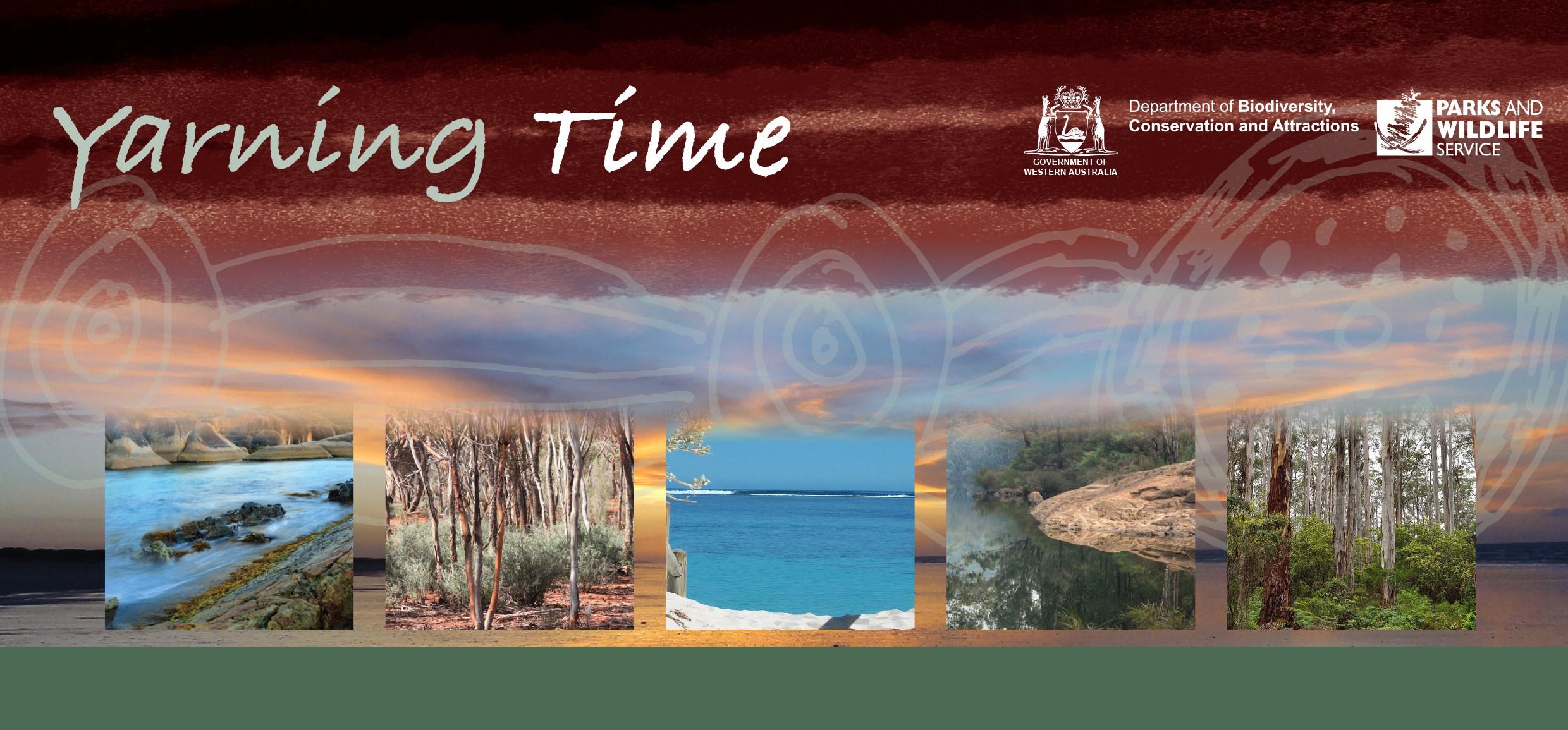
Yarning is a term used by Aboriginal people meaning talking and sharing stories.
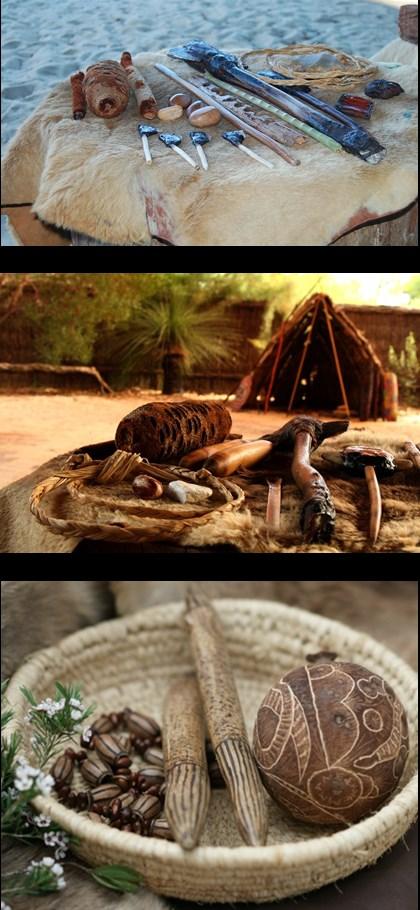
We are pleased to bring you news and information that showcases the important work that has been undertaken by DBCA and Traditional Owners. Yarning Time informs the community, our partners and staff of developments in Aboriginal engagement across the State.
Aboriginal engagement involves almost every aspect of the department’s work including reserve creation, science, recreation, tourism operations, conservation land management, fire management, wildlife management and heritage protection, much of which is being enabled through formal and informal joint management and partnership initiatives.
Please have a read and enjoy.
In this issue:
NAIDOC Week 2
Reconciliation Week video: Mabo family feedback 8
Warlang boodja / Marna Bangarra - Warren region 9
International Ranger of the Year 10
Funding boost for Aboriginal rangers with round 4 recipients announced 12
DBCA partnering up with Traditional Owners to conserve threatened species and restore the land 13
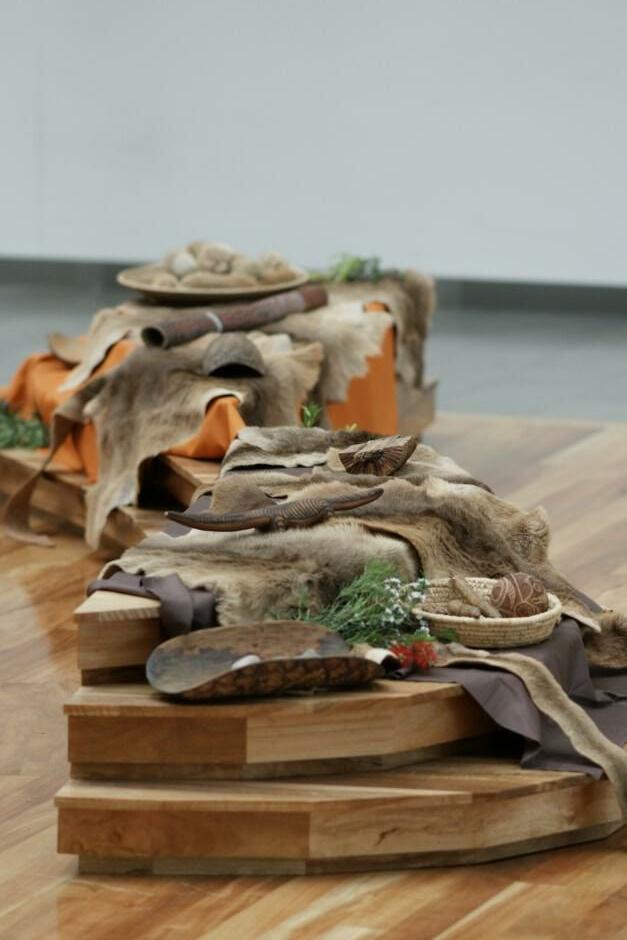
DBCA science project updates 14
Aboriginal engagement on trail projects on the south coast 17
New Explore Parks website 17
Follow the dream Thundelarra on-Country camp 18
Yinggarda rangers’ new Natural Conservation Program reveals unseen wildlife 19
Contact 19
The Department of Biodiversity, Conservation and Attractions respectfully acknowledges all Aboriginal people as the traditional owners of the lands and waters it manages, and recognise their continuing connection to land, water and community.
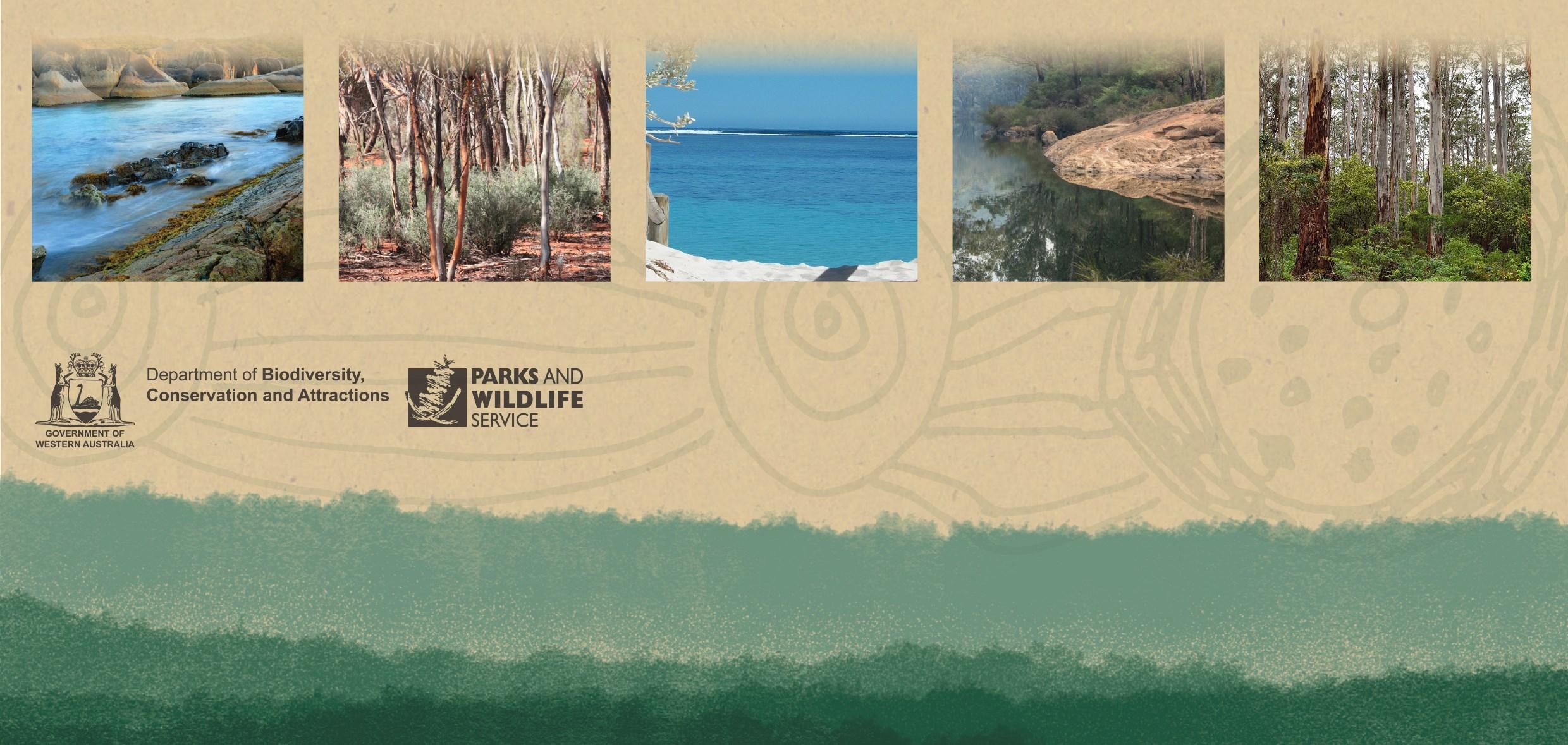
NAIDOC Week

NAIDOC Week is held from 3–10 July every year and is considered an opportunity to celebrate and recognise the history, culture, and achievements of Aboriginal and Torres Strait Islander peoples. This year’s theme Get Up! Stand Up! Show Up! encourages all Australians to amplify their voices and narrow the gap between aspiration and reality, good intent and outcome.
The department is committed to celebrating NAIDOC Week and acknowledges Aboriginal people as the Traditional Owners of the lands and waters it manages. We also recognise the unique role and expertise Aboriginal people have and are committed to working in partnership to conserve Western Australia’s biodiversity, culture and natural values.
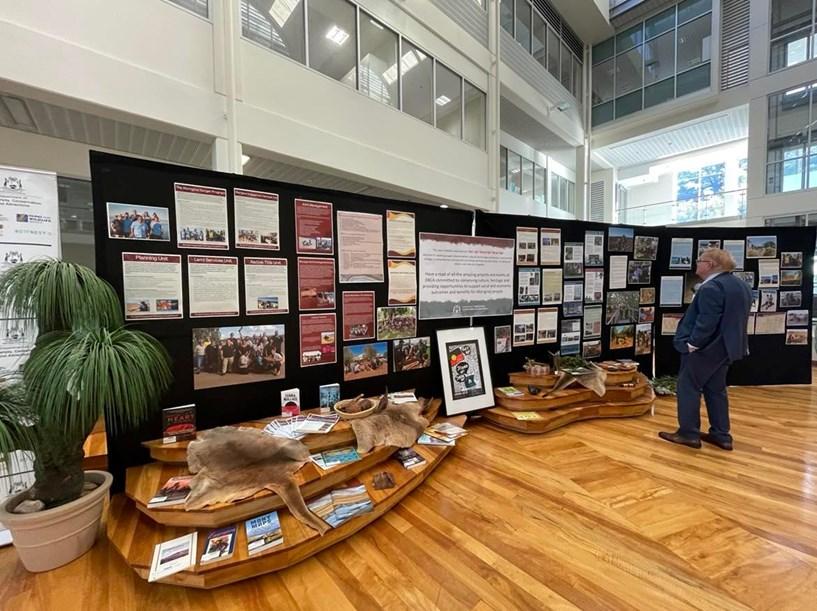
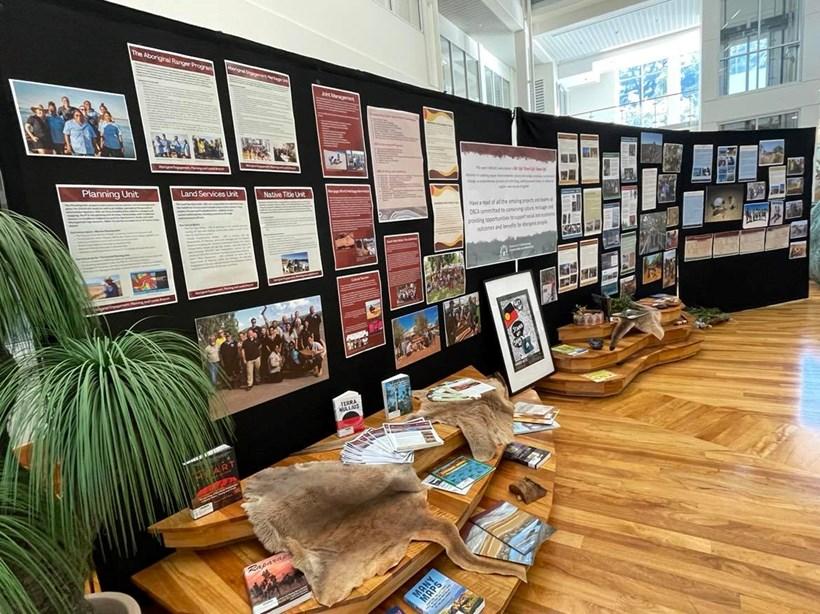

Kensington
To celebrate NAIDOC Week, metro staff were treated to a lunchtime movie screening, showing a series of Aboriginal short films and a Welcome to Country by Noongar man Nick Abraham. There was also a weeklong display in the Kensington Atrium which looked at some of the amazing work being done at DBCA, showing the way that various staff are helping to seek proper environmental, cultural and heritage protections.

2 Yarning Time Issue 16: September 2022
Article by Karis Erceg, Project Officer - Aboriginal Programs
NAIDOC Week display
Nick Abraham conducting a Welcome to Country before the lunchtime movie screening
NAIDOC Week
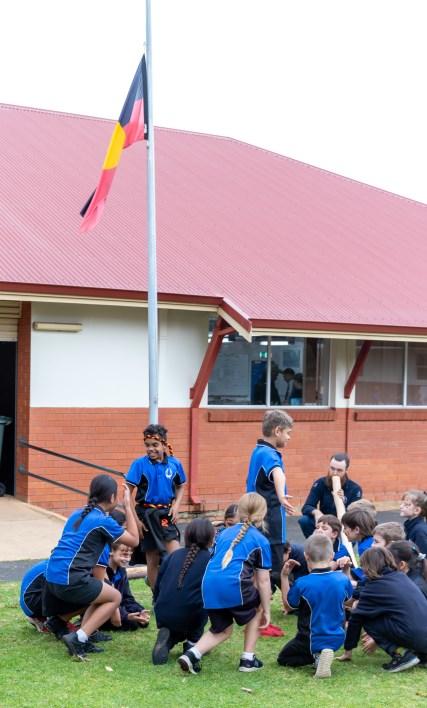


South West regional parks team celebrating NAIDOC Week – South West region
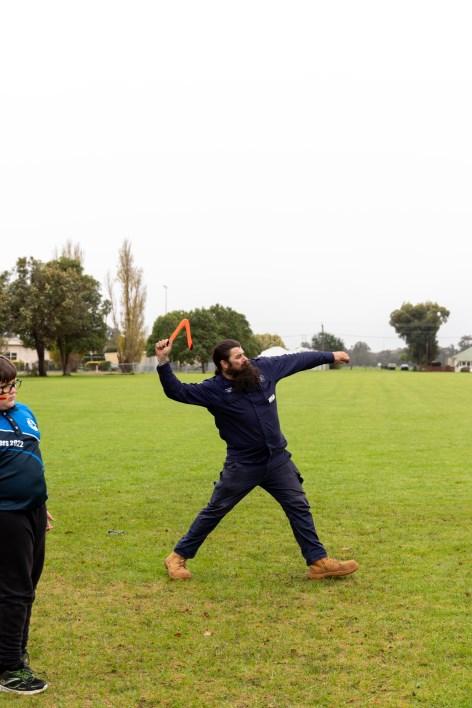

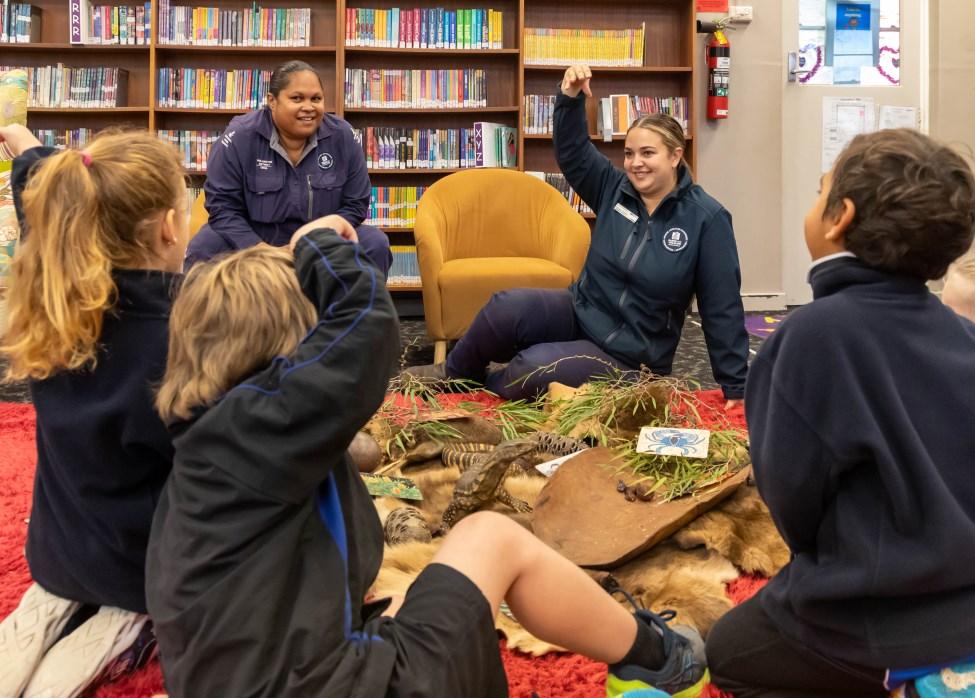
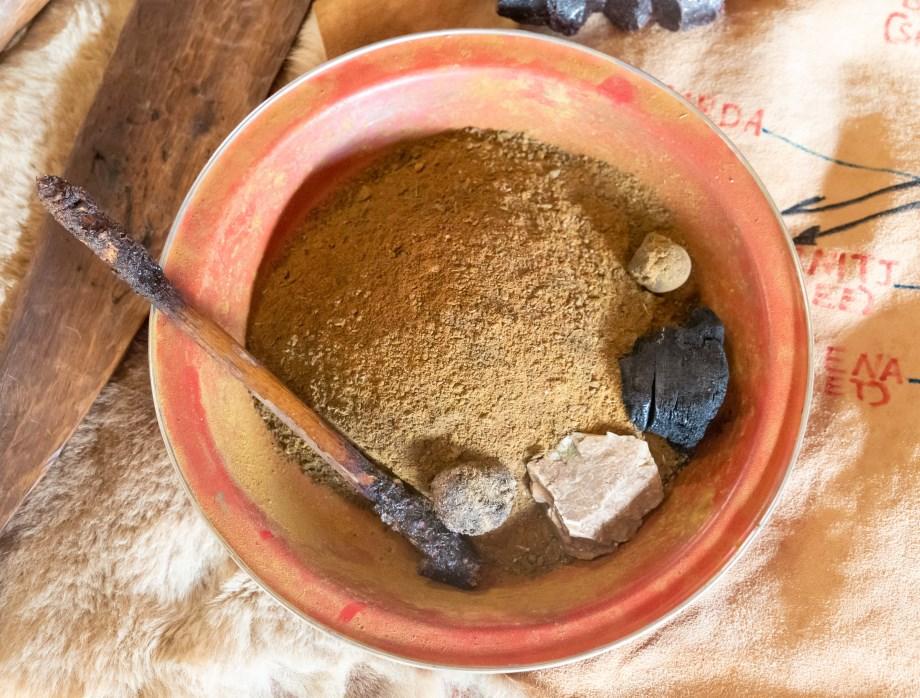
On the 27th of June, DBCA Aboriginal staff from the South West, Dakota Baker (A/Ranger Grade 1/2), Shannon Ugle (A/Ranger Grade 1/2), Jonnie Cobby (A/Operations Officer, Regional Parks), Ryley Clarke (Ranger Grade 1/2) and many others took part in a NAIDOC day celebration at Harvey Primary School. The day was filled with activities and workshops conducted by DBCA staff.
Events and activities included: a Welcome to Country and Smoking Ceremony conducted by the local Elders and Traditional Owners from the area traditional dances and stories performed by some of the local primary school students learning about bush tucker and medicine how to make and use traditional tools dancing and storytelling workshops.
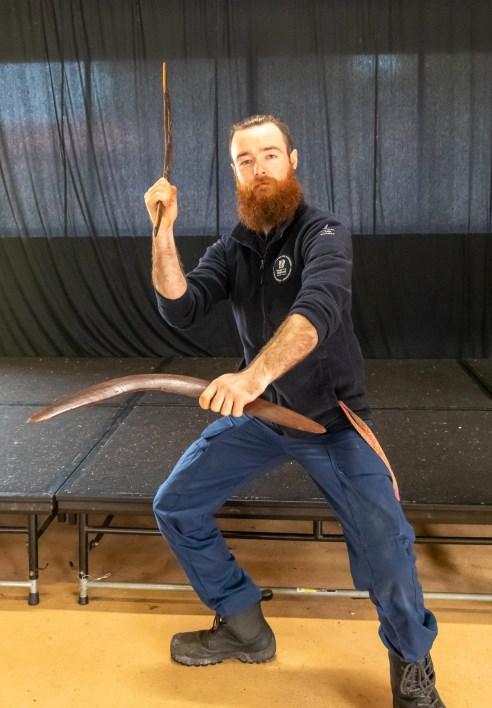
3 Yarning Time Issue 16: September 2022
L-R: Shannon Ugle and Ryley Clarke
Dakota Baker
Jonnie Cobby
Shannon Ugle
NAIDOC Week
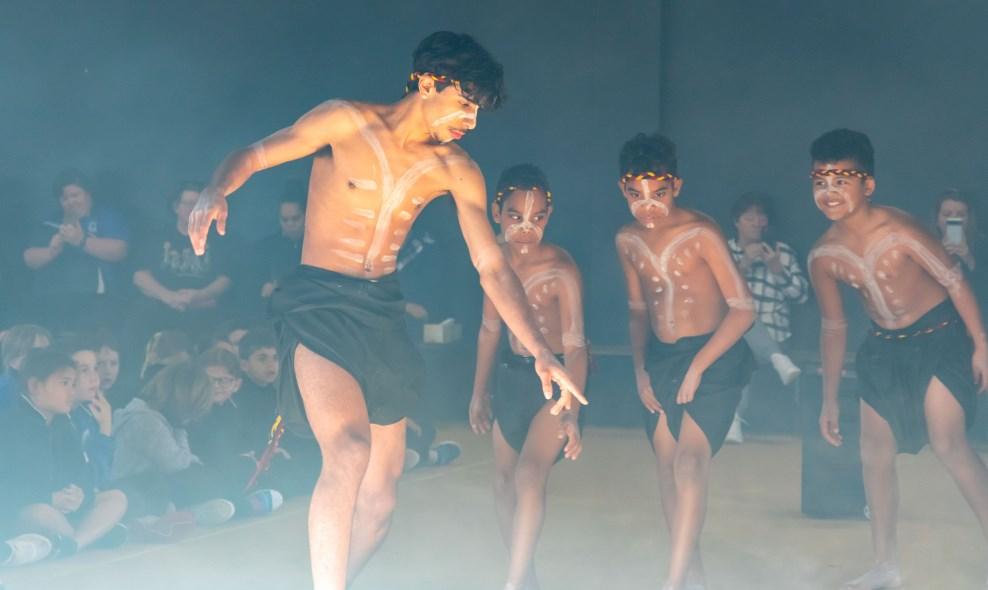
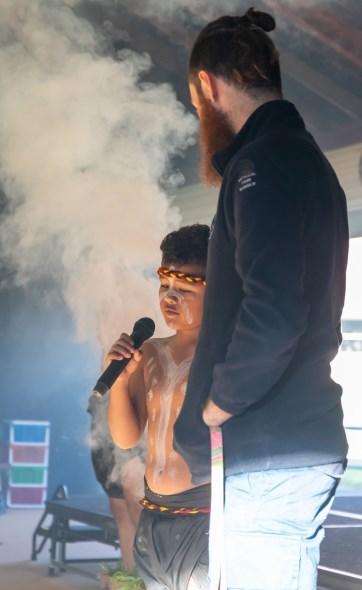
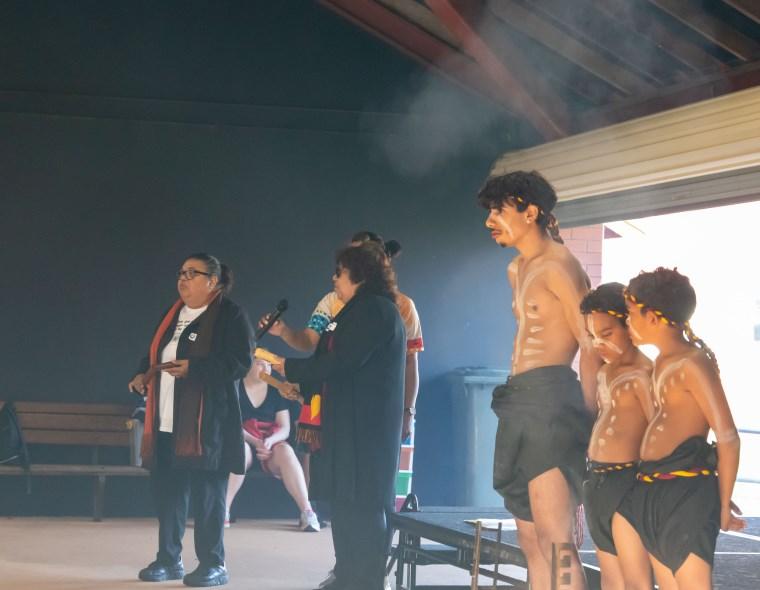
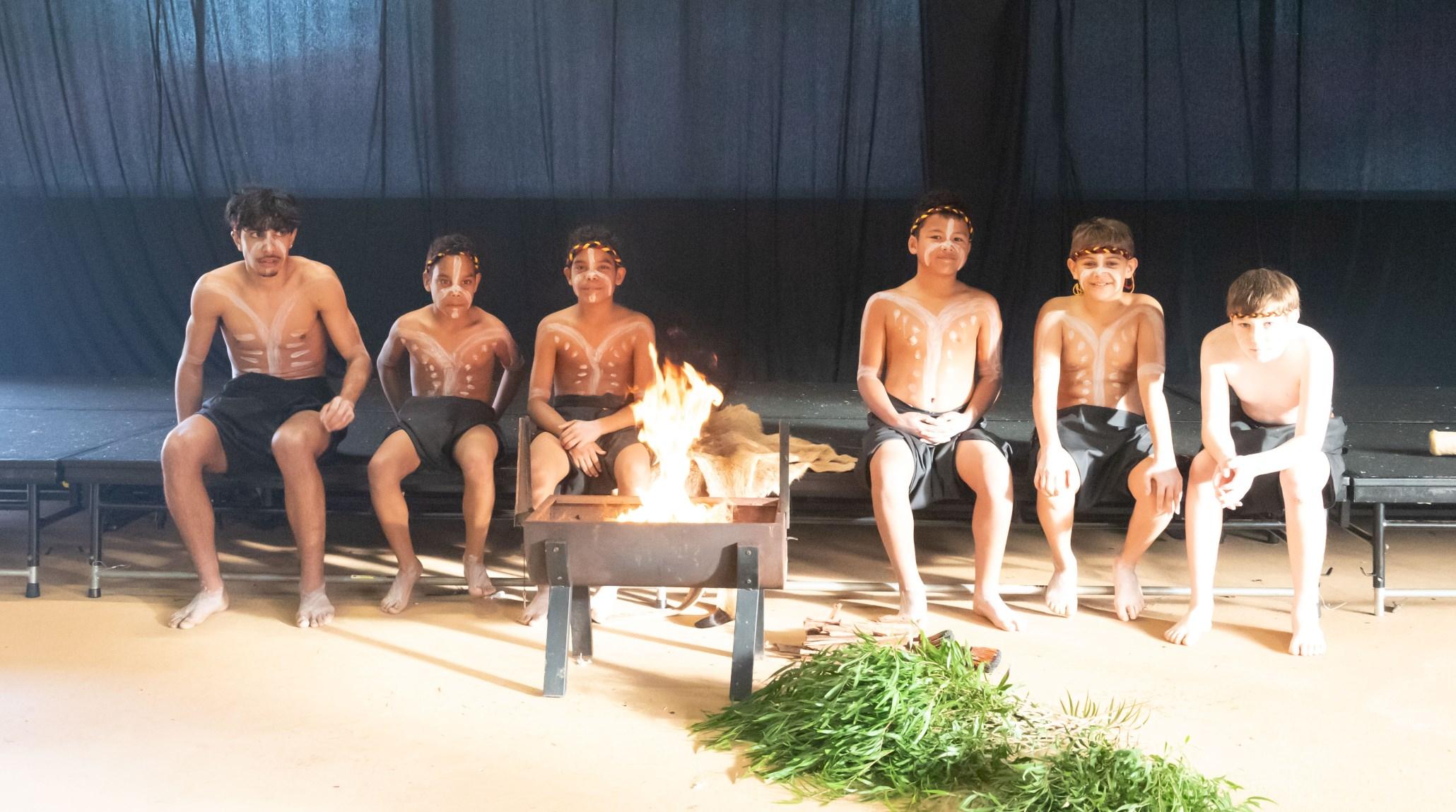


4 Yarning Time Issue 16: September 2022
South West regional parks team celebrating NAIDOC Week – South West region Students from Harvey Primary School doing traditional dance.
Article by Dakota Baker, A/Ranger and Ryley Clarke, Ranger
NAIDOC Week
South Coast region celebrates NAIDOC Week

This NAIDOC week, the South Coast region sprinkled a few events across the week.
Glenda Williams exhibition at the Library

Staff travelled to the Albany Library to engage with Glenda Williams' wonderful photographic exhibition of Aboriginal people in Gnowangerup 1920s–1960s (please note images are intentionally blurred for cultural and intellectual property reasons).
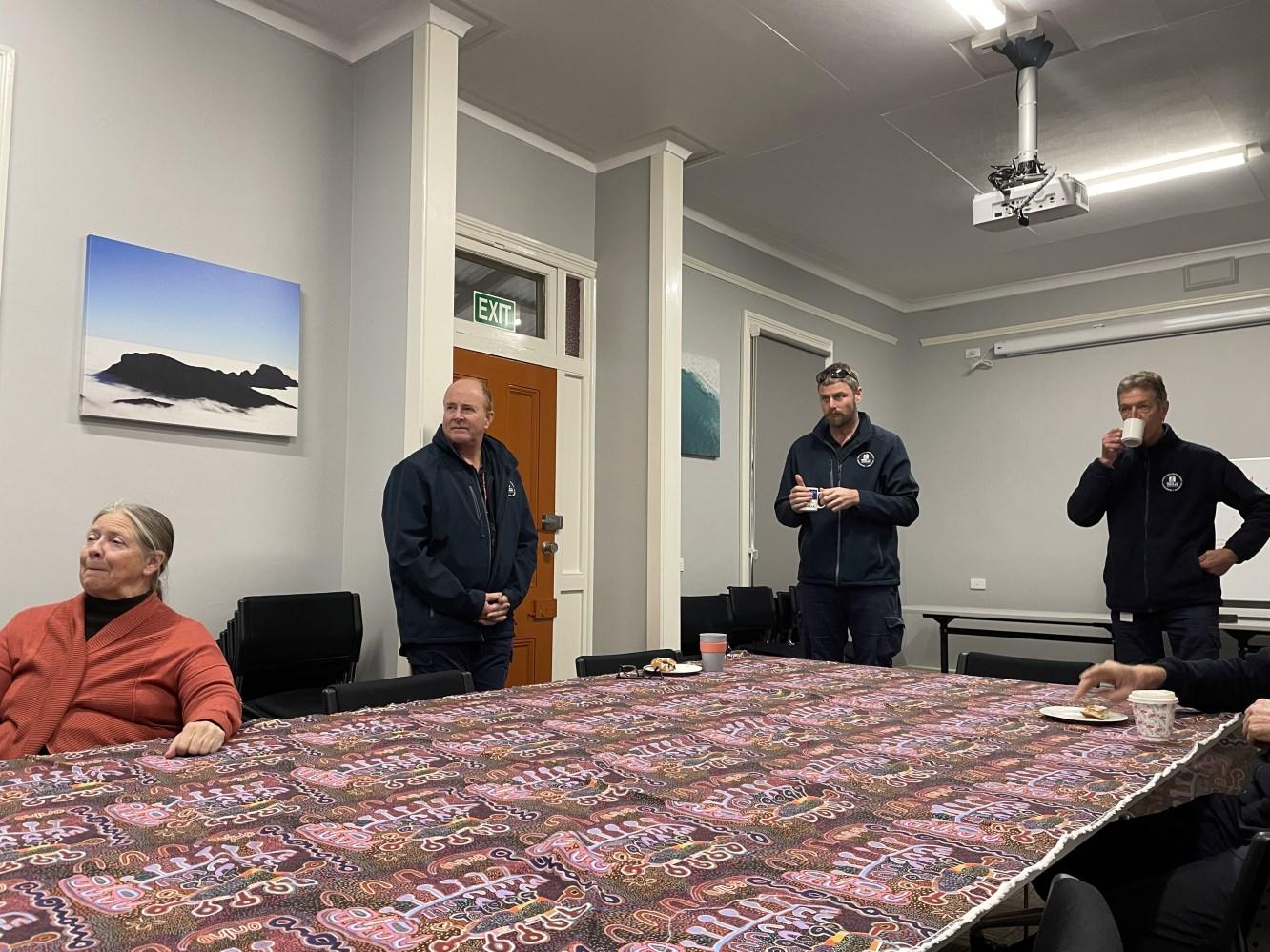
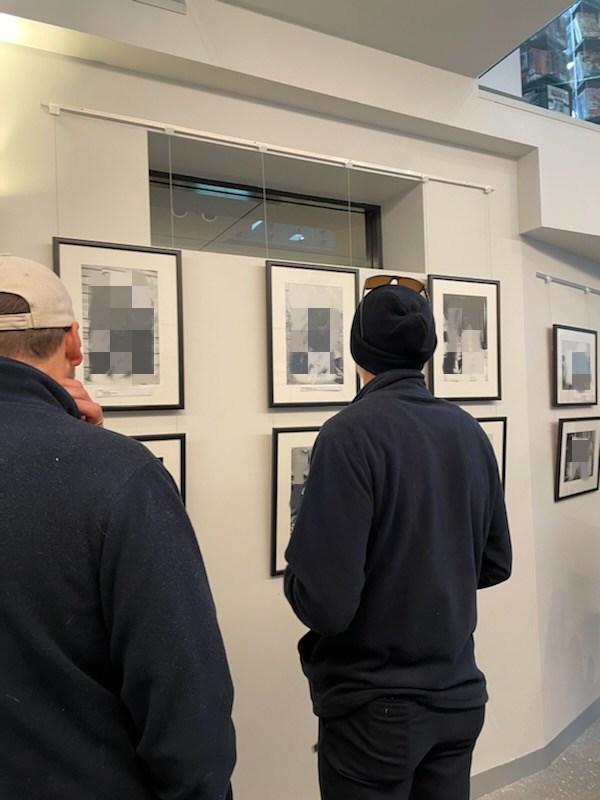
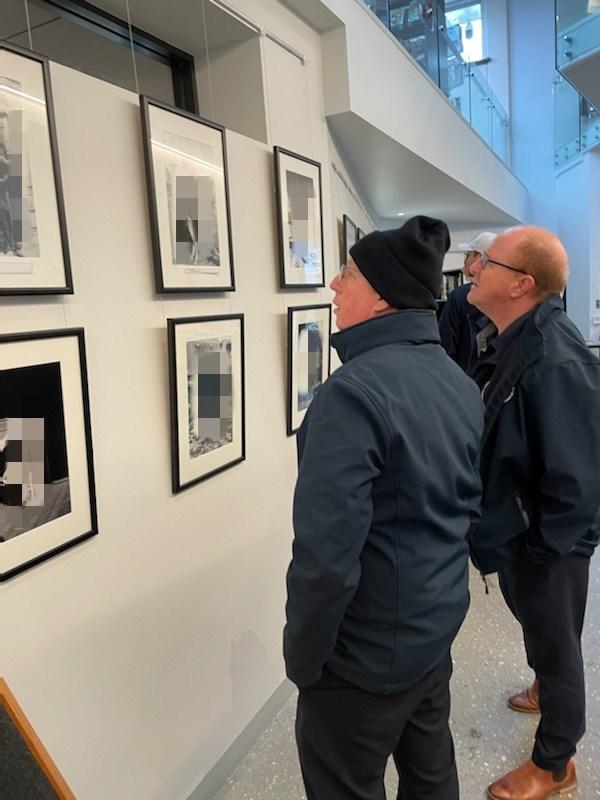
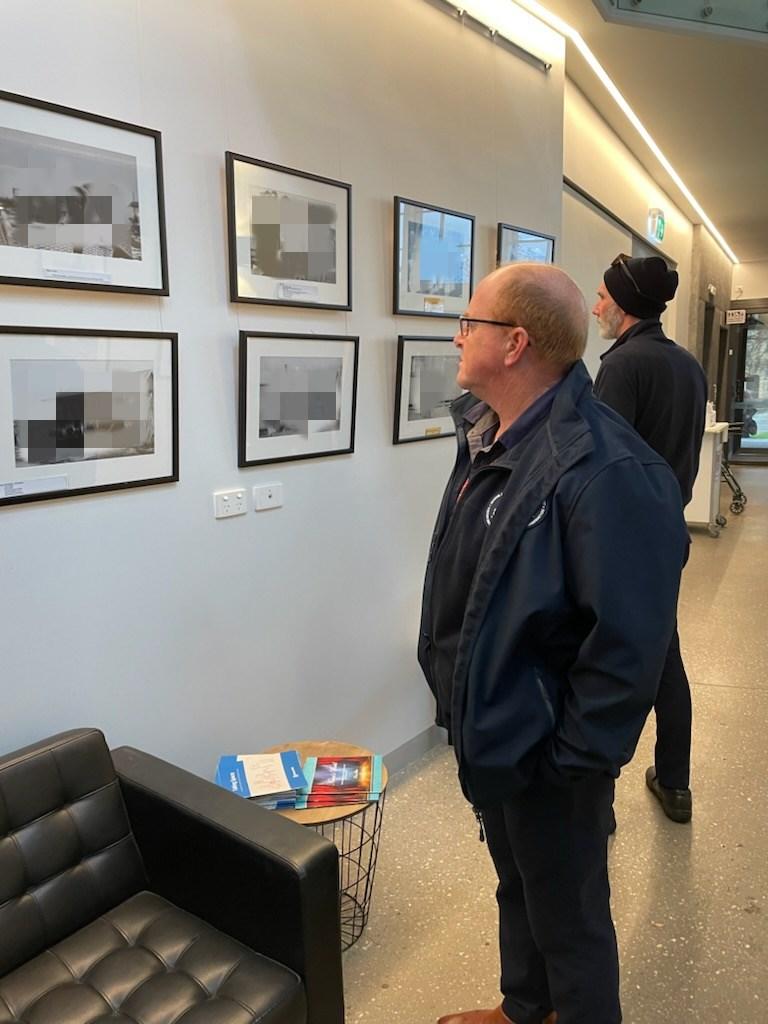
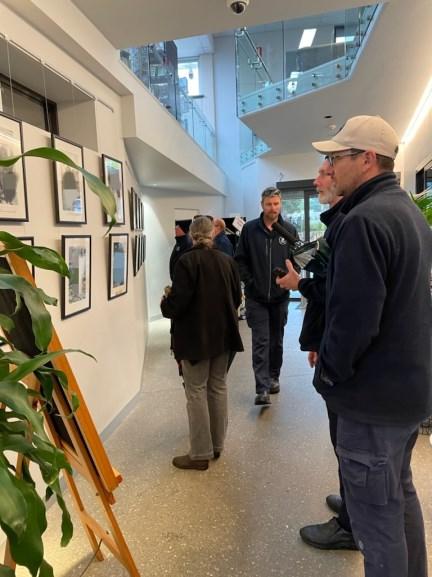
‘Survivors of Wadjemup’ viewing and discussion
Staff enjoyed morning tea whilst viewing the short film 'Survivors of Wadjemup'.
The film was viewed as being somewhat challenging and emotionally charged which brought a reflective discussion from participants.
5 Yarning Time Issue 16: September 2022
Article by Jade Malanczak, Aboriginal Engagement Coordinator – Wagyl Kaip and Southern Noongar
DBCA staff enjoying the ‘Survivors of Wadjemup’ viewing.
DBCA staff perusing the Glenda Williams exhibition
NAIDOC Week
Zoological Parks Authority (ZPA) - Kyooya Designs
ZPA recently engaged with an amazing up-and-coming business (Kyooya Designs) run by three young Noongar ladies creating beautiful artwork. Their artwork was showcased on the trail map, the school holiday signs and a billboard. Visitors followed the trail to six Noongar animals Yooran (Bobtail), Yarkiny (Western Swamp Tortoise), Wetj (Emu), Nyingarn (Echidna), Yonga (Kangaroo) and Ngoolyak (Carnaby’s Cockatoo). They learned the Noongar name and a symbol to complete the trail, and the Noongar symbols that they have learnt along the way could be used to write a story. Visitors posted their story on social media and tagged @perthzoo to go into the draw to win one of five family passes.
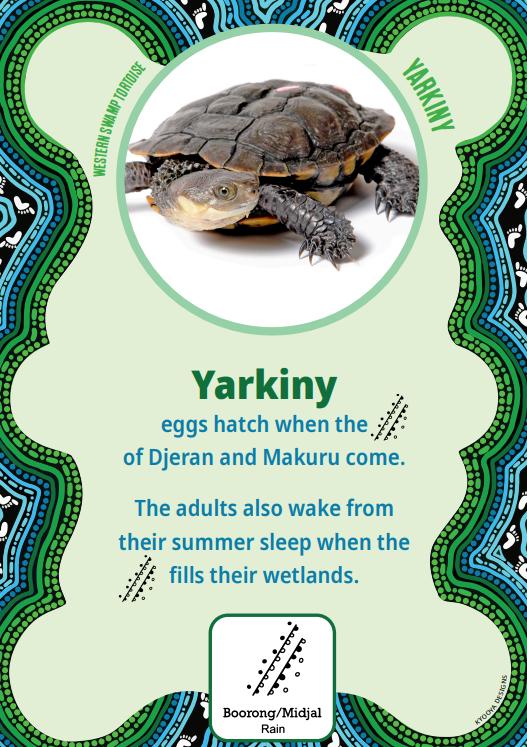
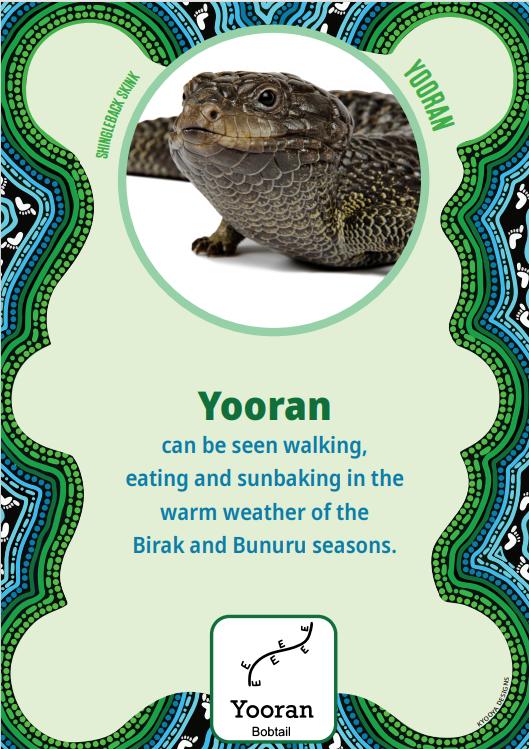
Kyooya Designs is a small Aboriginal art business located in Perth, Western Australia. Chloe Calyon is the artist behind Kyooya Designs. Kyooya Designs produces both digital and hand painted artwork on a variety of products. The artist uses both modern and traditional techniques, incorporating vibrant and earthy colours. Artwork produced by Kyooya Designs often reflect unity and community coming together.
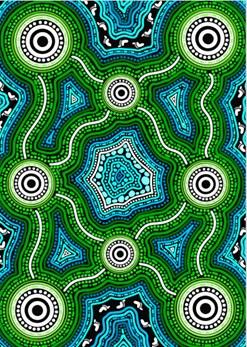
This image has core elements to represent the location of the Zoo. The design was heavily influenced by the Swan River, the “Derbal Yerrigan”, which is a significant body of water to the Noongar people. The Swan River offered places for Noongars to trade, have ceremonies and conduct women and men’s business. The Swan River is also included in significant stories about the Waagyl. The design background is wavy to symbolise the moving water of the Swan River. Each meeting place is connected by lines which represent the connection between us, as we are all one within the Earth and are connected in one form or another.

The six outside circles are meeting places. They represent the six south west native title settlement groups that live on Noongar Country. They are on the outside of the image to create a border.
The two smaller circles inside the image represent people and animals from all over the world that come to Perth Zoo. They are inside the middle of the image as they are welcomed to Noongar Boodjar (land). The footprints are placed around the image. They symbolise the journey of everyone, including the Traditional Owners who travelled the land before it was a zoo.

6 Yarning Time Issue 16: September 2022
The graphics team have beautifully incorporated the artwork into the signs along the walk trail.
Article by Kelsie Prabawa-Sear, Discovery and Learning Manager
NAIDOC Week
Zoological Parks Authority (ZPA) - Aboriginal dancers
From Sunday 3rd to Tuesday 5th July, Aboriginal dancers from Ngalak Nidja performed at Perth Zoo for visitors to enjoy. The performances were held on the main grass area at 9:30am each day. For more information, visit Ngalak Nidja on Facebook.
Ngalak Nidja translates to 'We are here' in Noongar language. This is in reference to the Noongar people having lived here in perfect harmony with the Boodja (land) for over 80,000 years and still continuing to do so. Ngalak Nidja celebrate culture by sharing their traditional practices and knowledge with the wider community in many different ways, including through traditional dance, storytelling, consulting, facilitating workshops, running tours and opening events.
Article by Kelsie Prabawa-Sear, Discovery and Learning Manager
Dandjoo launch
DBCA’s Kensington Atrium was abuzz with energy on 1 July when the Minister for the Environment, the Hon. Reece Whitby MLA, formally launched ‘Dandjoo’.
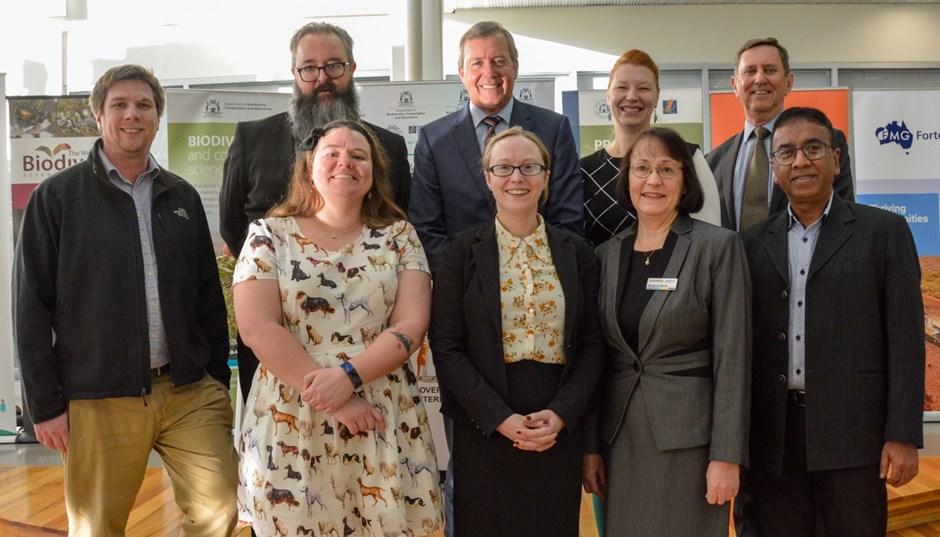
Built by DBCA’s Biodiversity Information Office (BIO), Dandjoo is a new data sharing platform that brings together biodiversity information from across government, industry and community to aid decision making, approvals and research.
Dandjoo, together
The Noongar-language word ‘dandjoo’ is generally translated into English as ‘together’. ‘Together’ aptly describes Dandjoo’s core function to bring data together, so its value can be magnified and shared.
The name Dandjoo recognises that working together has been critical to establishing BIO’s data sharing platform. The platform has been realised thanks to the capacity of individuals and institutions from all sectors to work collaboratively, and to share both expertise and data with the BIO team and with one another.
The name also references BIO’s partnerships with other State and Commonwealth agencies. Dandjoo is one piece of a much broader plan to improve government decision-making by improving access to data, with agencies working together as one government.

Finding a name
The BIO team’s first step in selecting a name for Dandjoo was to speak to the staff in DBCA’s own Aboriginal Engagement and Heritage Unit (AEHU). We started by asking whether using an Aboriginallanguage word as a name was appropriate, and they were very supportive.
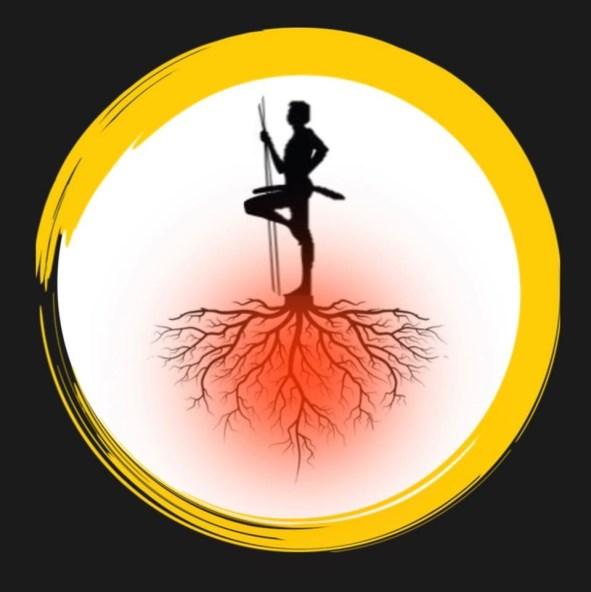
From that point on, DBCA’s AEHU team were invaluable they not only guided us through the process, but also spent a considerable amount of time talking to us about the intent and background of our project, and personally undertaking research to find potential names.

7 Yarning Time Issue 16: September 2022
Minister Whitby (centre back) with the BIO team, including DBCA Director General Mark Webb (back right) and DBCA Executive Director Dr Margaret Byrne (front, second from right).
NAIDOC Week
Dandjoo launch
On the AEHU team’s advice we looked to the Noongar language as our source, in recognition that BIO’s office sits on Whadjuk Noongar Country. After a number of great discussions (and learning many Noongar words along the way) we agreed that ‘dandjoo’ was particularly fitting. From there, we approached the Noongar Boodjar Language Centre to ask for a certified translation and for their support to use the name Dandjoo. Dandjoo is live and available at bio.wa.gov.au
We are deeply appreciative of the time, thought, and effort provided by both AEHU and Noongar Boodja Language Centre staff in helping us name Dandjoo.
Article by Alan Gill, Science Communications Officer
Yanchep National Park
NAIDOC Day was celebrated at Yanchep National Park on 3 July 2022. The day started with an Acknowledgment of Country followed by sand art, cultural and children’s activities, bush tucker tastings and bush tea. It was an amazing day with over 200 people attending. We have an amazing team of people in Yanchep National Park, from volunteers to staff who came in on their day off to help set up and serve samples of food while large groups of kids painted, weaved, played and created.
Article by Derek Nannup, Eco Education Officer

Reconciliation Week video: Mabo family feedback
During Reconciliation Week, DBCA staff from the Aboriginal Engagement and Heritage Unit, Native Title Unit and Public Information and Corporate Affairs (PICA) branch assisted in the production of a three minute video celebrating the work of Eddie Mabo in establishing Native Title and how, in turn, it has driven reconciliation. DBCA obtained approval from the Mabo family via the Australian Institute of Aboriginal and Torres Strait Islander Studies (AIATSIS) to use file vision of the late Eddie Mabo, which was essential for setting the scene for the national reconciliation narrative that we’re all part of as Australians. AIATSIS helps manage copyright and culturally appropriate access to the vision, in partnership with the Mabo family.
The following feedback from Mr Mabo’s daughter, Gail, who lives in Queensland, is very encouraging and was provided over the phone to Sally Treasure (A/Production Assistant), who worked closely with the video’s producer, Samille Mitchell (Communications Officer):
• “Your messaging and approach to reconciliation is something my father could have only dreamed of.”
• “So happy to see the work that WA Traditional Owners and government are doing together I want to share the information with my friends and Facebook followers.”

• “So proud to see them fellas walking on the beach in their smart uniforms.”
• “Love the video, you’ve got my approval.”
• “Please give me a call if you need anything else.”
The feedback shows that DBCA has a lot to be proud of as an agency when it comes to practical reconciliation and joint management.
View the video here.
Article by Zoran Jovanovic, Branch Manager PICA

8 Yarning Time Issue 16: September 2022
Warlang boodja / Marna Bangarra – Warren region
In late June in the Perup home to large populations of our south west threatened fauna two Aboriginal nations came together to share culture, knowledge and something else very special…woylies. This sharing was part of a translocation program that aims to reintroduce woylies as a pioneer species back into the Guuranda-Innes National Park. Pioneer species are integral to ecosystem function as they are soil engineers, increasing nutrient turnover, dispersing fungi and assisting with the germination of many native plants.
The woylies were translocated as a part of the Marna Bangarra (healthy, prosperous Country) project which works in partnership with Narungga Nation Aboriginal Corporation. “Woylies are a vital component that is missing in Narungga Country to keep it healthy. In Noongar Country we say warlang boodja (healthy Country) and we are lucky to still have woylie left here to share with our brothers and sisters from other Aboriginal nations,” commented Sonya Stewart, Aboriginal Engagement Coordinator. As a sign of respect, the Narungga people sought permission and involvement of the Noongar people to support the relocation of the woylies from the Perup to the Yorke Peninsula, 2000km away.
Iszacc Webb from Undalup Association and Shawn Colbung from Binalup Aboriginal Corporation, two proud Noongar Traditional Owners, were lucky enough to escort the precious cargo back to South Australia with Narungga representatives to assist in the release of the Woylie on the Yorke Peninsula.
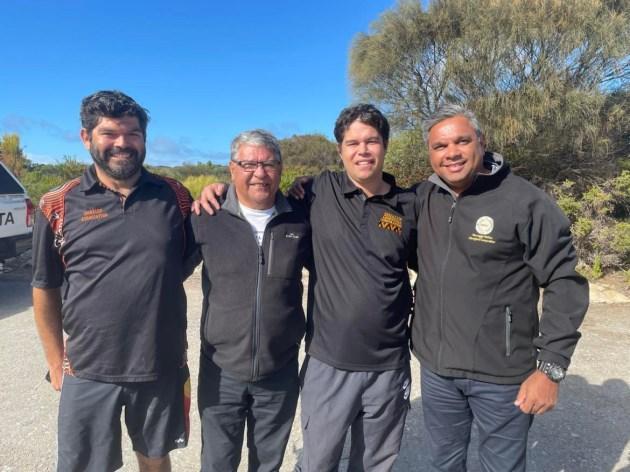
“The woylie project was a great experience to be a part of, working together with other Aboriginal people from different parts of Australia was a real positive. We translocated 36 Woylies from Perup to Guuranda-Innes National Park where they have been extinct for over 100 years. Woylies are eco system engineers turning soil and playing a vital role in maintaining Country.” Shawn Colbung, Minang/Koreng man and Binalup ranger team leader.
“Working with Traditional Owners from other parts of Country to reestablish woylie populations has been great … to help protect their Country as well. The collaboration and knowledge sharing shows the unbroken connection we have to Country; it’s part of our kinship as Aboriginal people.” Iszaac Webb, Wadandi (Saltwater People) cultural custodian of the Bibbulmun (Noongar) nation.
Much work happens behind the scenes to make these translocations happen and this is just the end result. A huge amount of work from DBCA staff needs to be acknowledged. DBCA local staff are now working on supporting Aboriginal rangers to be trained further in animal handling so that these types of projects can be further enhanced in the future. The project has also raised interesting discussions with Elders about translocation programs more generally and may be addressed in the newly established Cooperative Management Committees or Joint Management Committees.
Night Release
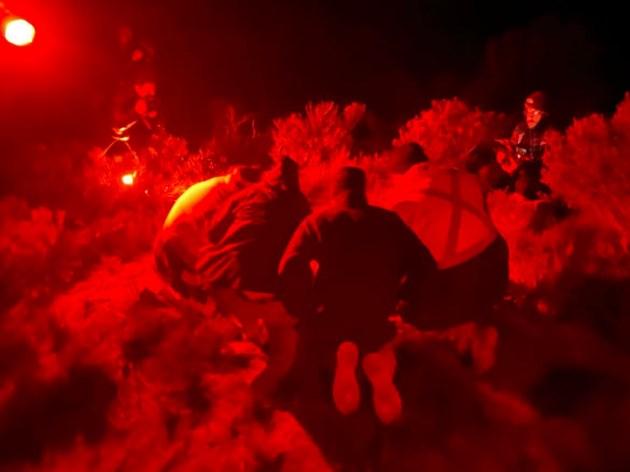
Article by Sonya Stewart, A/Policy and Project Officer, Aboriginal Joint Management, Heritage and Engagement
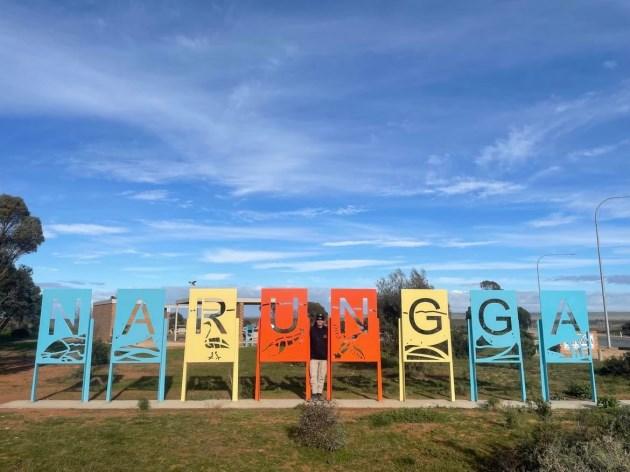
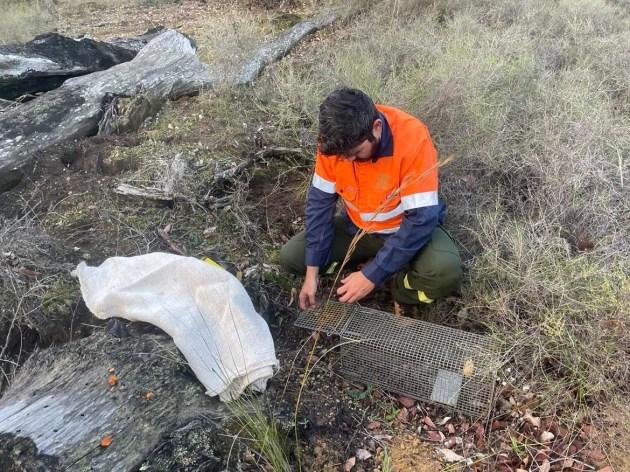


9 Yarning Time Issue 16: September 2022
Iszaac Webb (Undalup Association)
Noongar and Narungga traditional owners
Shawn Colbung (Narungga Country)
International Ranger of the Year - Goldfields region
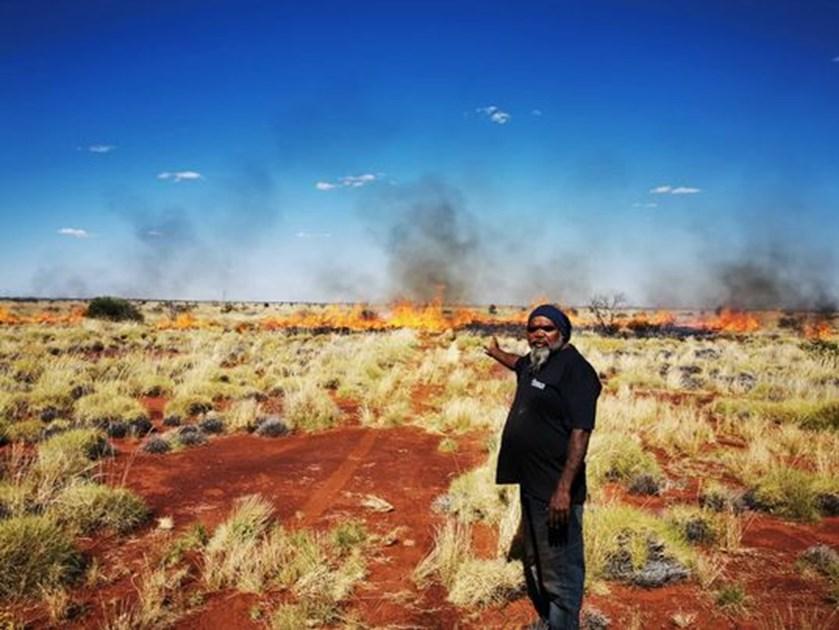


DBCA is proud to announce that Parks and Wildlife Service Ranger Ben Brown has been awarded International Ranger of the Year by the International Union for Conservation of Nature (IUCN) World Commission on Protected Areas (WCPA). Announced in Kigali, Rwanda, the IUCN WCPA International Ranger Awards celebrate the remarkable work of rangers in protected areas around the world.
James Piper (Operations Officer Joint Management) nominated Ben for this award. Here is what he has to say about the process and working with Ben Brown...
It all started with a fairly inconspicuous email sent to the Regional Managers and a handful of departmental staff that work in the joint management space a few days before Christmas 2021. The type of email that easily gets lost in the piles of imaginary paper floating in the ether and forgotten over a summer break where work is the last of our thoughts. And if it weren’t for the effort, attitude and value of one man, that email probably would have been forgotten.
Now I will confidently say on behalf of all the staff in the Goldfields that our entire team of Aboriginal rangers are a credit to joint management and have brought so much knowledge, experience and positive energy to the team, but when we read the email alerting us to the second IUCN International Ranger Awards, one name was immediately thrown up as a contender for such recognition. The judges at the IUCN needed to hear about our man Yuddiy ‘Ben’ Brown.
So, what is it about Ben that makes him stand out in a team of star rangers whose daily efforts are contributing to positive land management in some of the toughest conditions in WA? That’s not such a simple question to answer in writing, but if you knew and worked with Ben there would be no need to answer it as you’d already know. To get the full context of how much effort Ben has put in you need to know a bit about his childhood.
Ben is believed to be the last baby born on the lands of the central deserts, to parents living a completely traditional lifestyle as his ancestors had for thousands and thousands of years. Until 1975 when an adventure expedition found his family, Ben’s entire world consisted of his mother, father, big sister Georgina and their pet dingo puppies.
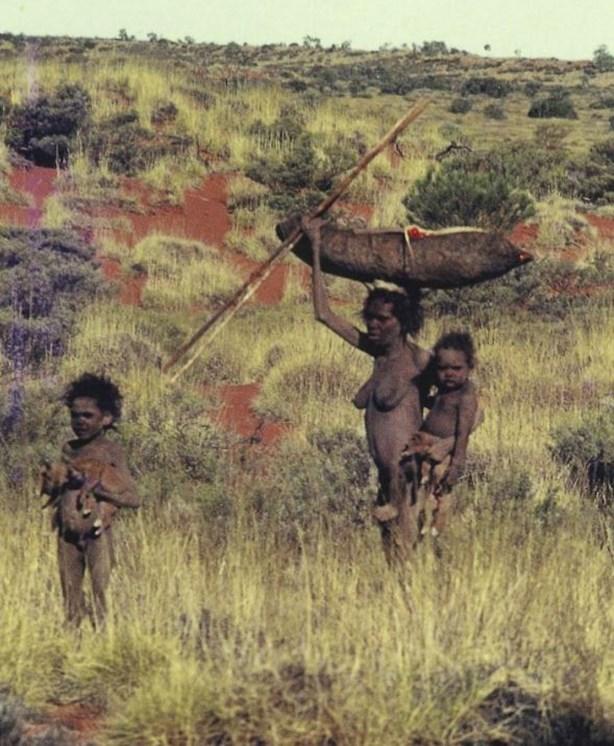
10 Yarning Time Issue 16: September 2022
Ranger Ben Brown overseeing a cultural burn in Pila Nature Reserve
Ben with his mother and big sister Georgina (1975).
International Ranger of the Year - Goldfields region
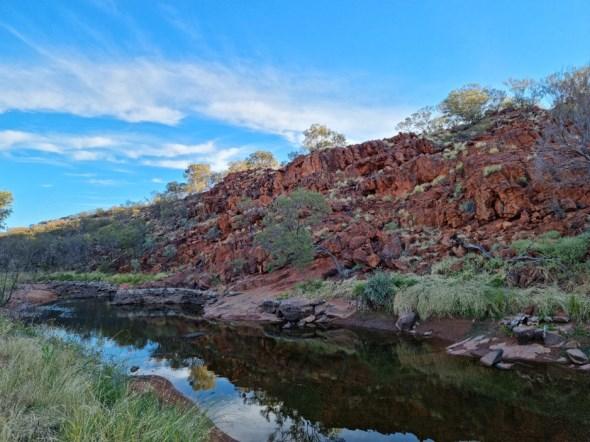
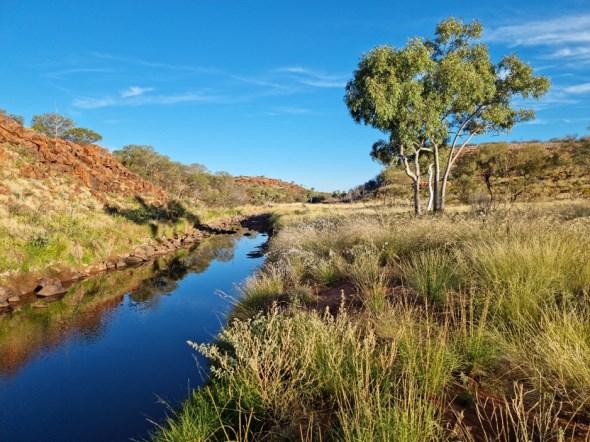
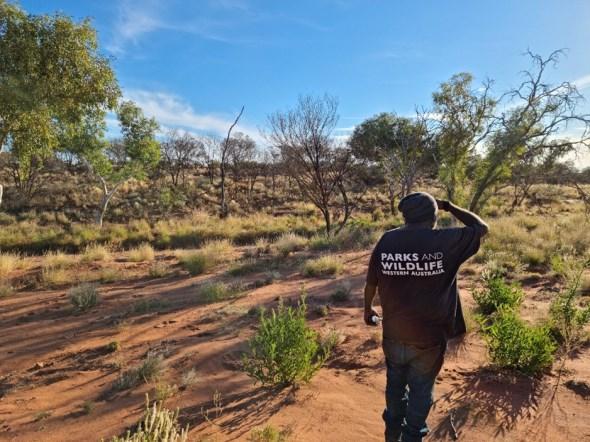
There was no concept of working as a ranger, let alone a house and office in Kalgoorlie. Growing up in and out of missions in the Wiluna area, Ben’s family later moved to the remote community of Karilywara (Patjarr) north of Warburton in the Gibson Desert. Nestled in the Clutterbuck Hills and consisting mainly of canvas army tents at that time, the community was an idyllic setting for a young child to grow and explore the country they belong to.
Fast forward several decades and the life that Ben now leads could not seem further removed from that childhood. Working as a government employee, punching the clock 9 to 5, Monday to Friday, is a lifestyle concept that didn’t exist to that young boy as he grew in harmony with the land, learning how to truly see and feel the Country, to read the stories that are formed in the sand with every track print and to hold the Tjukurrpa (dreaming) in his heart.
Although his life has changed dramatically from those early days living completely off the land, Ben’s connection to his culture and Country remains stronger than ever. A connection that is bolstered through joint management of Pila Nature Reserve, a connection that brings a new and invaluable skill set to the Goldfields Parks and Wildlife team. From a beginning that can only be understood by a few people now, to one that most of us see as “the norm”, Ben has made his own way in this oxymoronic “alien norm” and set a standard of a calibre no one could have predicted.
Having vanquished this drastic shift in lifestyle is worthy of continual praise in itself, but Ben continues to go above and beyond what is required or even expected of him all in the name of land management and protecting Pila. He will routinely work on his rostered day off or over weekends to allow for the vast 1200km drive from Kalgoorlie to Pila so that he and the Warnpuru rangers can spend as much time as possible conducting contemporary and cultural land management works.
Needless to say, this is just a slice of all the work that Ben does and what he brings to the team in the Goldfields but gives some idea of why his story and input earned him a ranger of the year nomination and why he is worthy of recognition on a global scale.
A short video has been put together to celebrate Ben and his contributions to his Country and DBCA.


11 Yarning Time Issue 16: September 2022
Ben scouting the land in Pila Nature Reserve
Article by James Piper, Operations Officer Joint Management
Creek running through the Clutterbuck Hills
“Old Patjarr” where Ben spent much of his childhood



12
Article by Judith White, Policy and Planning Officer
DBCA partnering up with Traditional Owners to conserve threatened species and restore the land
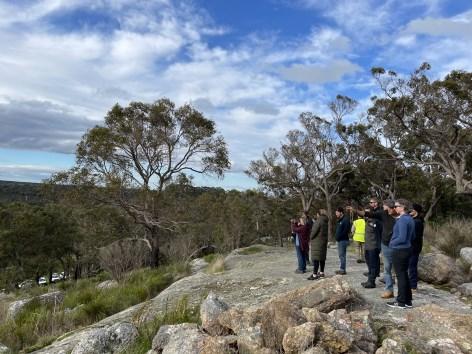
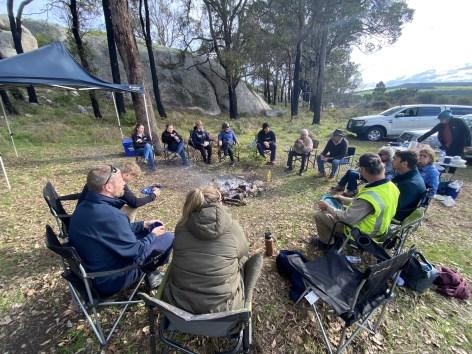


Threatened Species Commissioner Fiona Fraser visited Western Australia to see first hand some of the actions that are being implemented for priority threatened species as identified in Australia’s National Threatened Species Strategy 2021-2031 and Action Plan 2021-2026.
One of the sites that she visited is a property called ‘Ballogup’, which is a Noongar word for the purple swamphen (Porphyrio porphyrio). This property is owned by the Albany Aboriginal Heritage Reference Group (AAHRG) and lies immediately east of Manypeaks townsite and abuts the southern boundary of Lake Pleasant View Nature Reserve. South Coast NRM works closely with the Noongar Menang people on the south coast through their Restoring Noongar Boodja project, which is supported by Lotterywest, and includes a partnership with the AAHRG and DBCA to restore and protect cultural and biodiversity values on the Ballogup property and the adjacent Lake Pleasant View Nature Reserve.
Western ringtail possum (Noongar name is ‘ngwayir’) occur on Ballogup and surrounding reserves, and the Australasian bittern (Noongar name is ‘boordenitj’) are known from the adjacent Lake Pleasant View and surrounding wetlands. Both of these are threatened species and were included in the 100 priority species in the national action plan. DBCA and South Coast NRM have partnered to deliver priority recovery actions for both species in the Manypeaks area, with management of feral cats and foxes increased around these important areas of habitat. Ngwayir recovery is being monitoring by spotlighting surveys and camera traps. Acoustic monitoring of boordenitj, and studies of their movement, habitat use and wetland health are being implemented by DBCA scientists in collaboration with BirdLife Australia and the Australasian bittern recovery team.
Fiona Fraser met with Noongar Menang Elders at Ballogup along with DBCA and South Coast NRM staff to hear about how these partnership and projects were helping Aboriginal people to reconnect and care for Country through activities such as fire management, weed control, threatened species management and protection of cultural values. Elders spoke about connection to Country and told dreaming stories about how the land was formed in this area. They also spoke of the importance of culture to their people and working in collaboration with their partners towards reconciliation.
Fiona Fraser expressed her great appreciation in meeting with the Elders and the important role that Aboriginal people have in achieving conservation outcomes for threatened species and restoring the land.
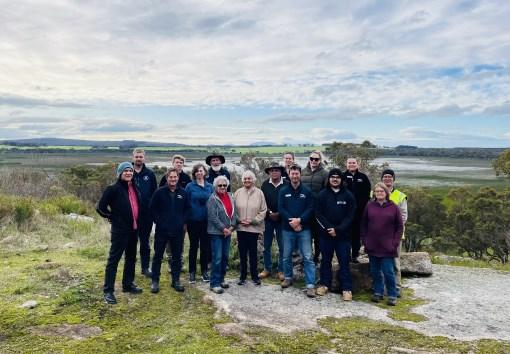

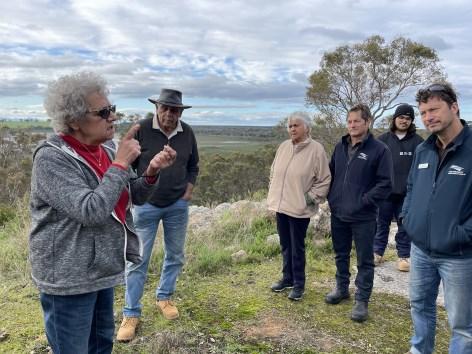
13 Yarning Time Issue 16: September 2022
Article by Dan Utber, Regional Leader Nature Conservation and Jade Malanczak, Aboriginal Engagement Coordinator – Wagyl Kaip and Southern Noongar
DBCA science project updates – Kimberley
region
DBCA science works in partnership with Kimberley Traditional Owners to undertake a range of science projects which support two-way learning.

Roebuck Bay flatback turtle project – Yawuru
The Roebuck Bay flatback turtle project has been running for four years and involves catching flatback turtles in Roebuck Bay to help understand their numbers and distribution, their foraging behaviour, and potential threats.
DBCA works with Yawuru Country managers and shares two-way knowledge about turtle ecology. The work has had some unique results including turtle and shark interactions and spatial data across the bay to aid management decisions.
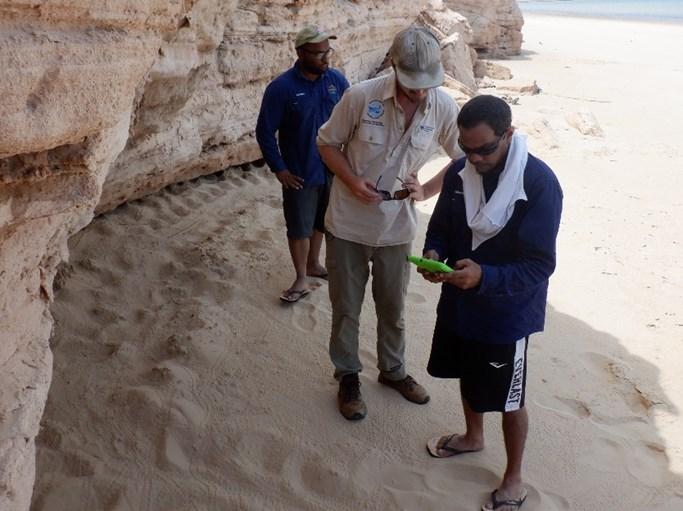

Eco Beach nesting turtle monitoring
This project is in transition to becoming a Yawuru-led project that will monitor flatback nesting at Eco Beach into the future. For the last two years, data has been collected jointly by DBCA and Yawuru. It is one of several projects in the Eco Beach area that Yawuru envision to be core work in the future.
Delambre Island turtle monitoring
This project monitors nesting flatback turtles each year on Delambre Island in the Dampier Archipelago. It employs three Ngarluma people for over 30 days each in every season. Plans are in place for further, more permanent employment options. Ngarluma are an integral part of the Delambre monitoring program.
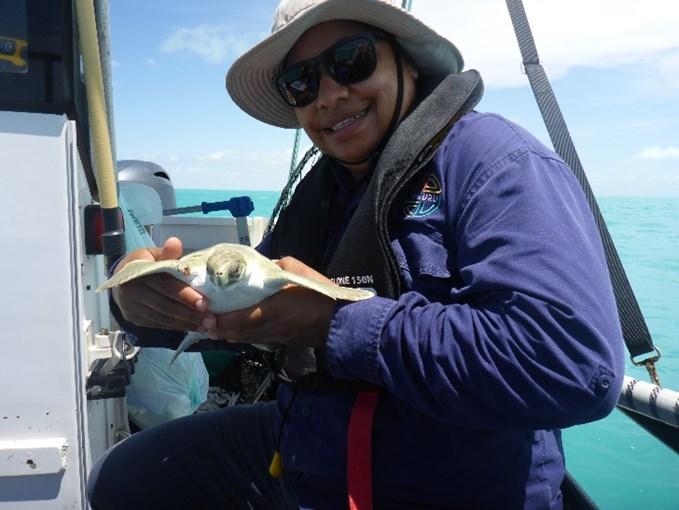
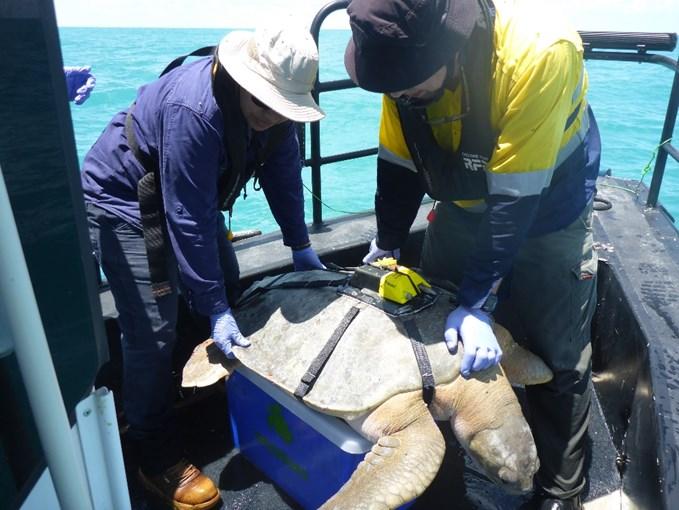
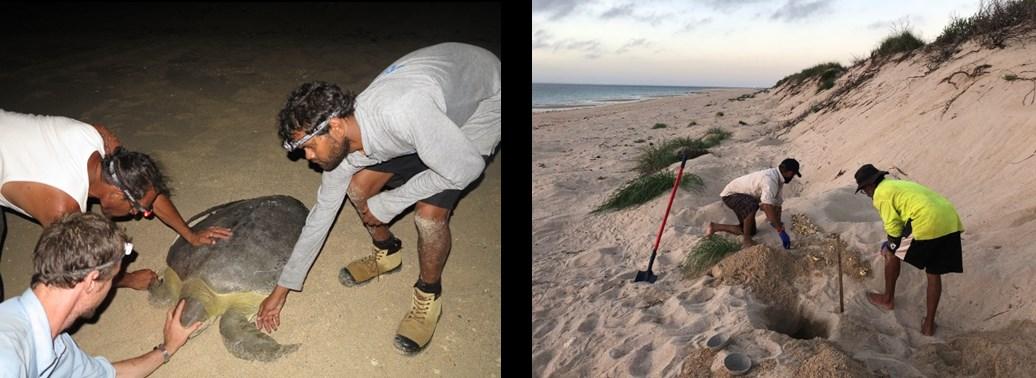
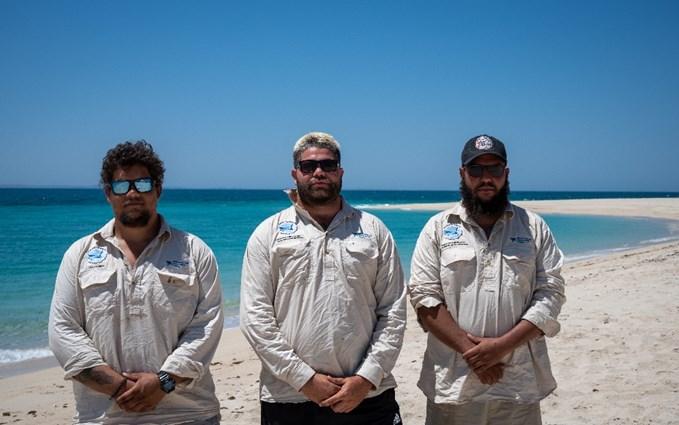
14 Yarning Time Issue 16: September 2022
DBCA science project updates – Kimberley region
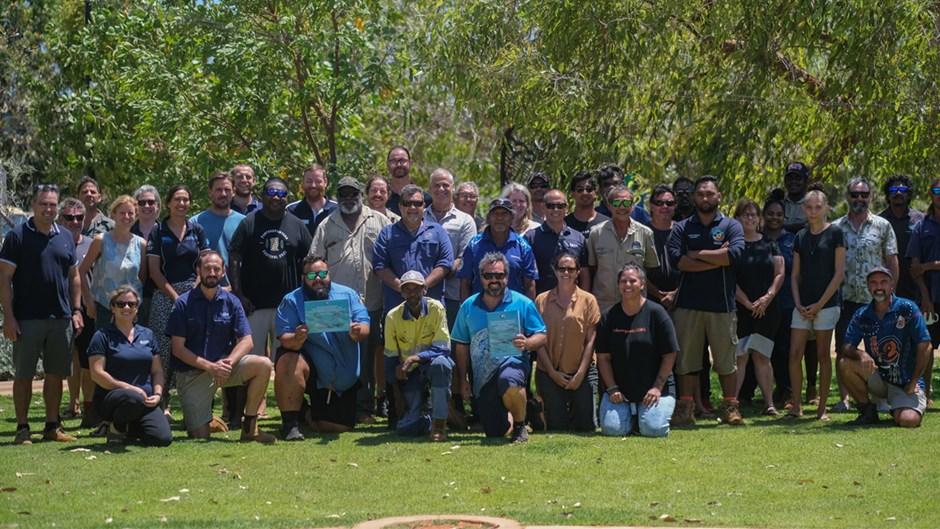



Indigenous Saltwater Working Group (ISWAG) – 9 groups across the Kimberley ISWAG is a consortium of Indigenous groups across the Kimberley who have come together to identify and solve shared issues in their sea Country. DBCA have supported this concept from the beginning with expertise and funds and continue to be an advocate of the concept. The group has met and produced a turtle and dugong plan and a prospectus to seek funds. The concept has been praised by external groups across Australia including the Australian Government.
Snubfin dolphin census Yawuru Nagulagun Roebuck Bay Marine Park
This project has been running for since 2019 and involves surveying Roebuck Bay along transect lines to photograph, identify and count snubfin dolphins (and other marine mammals) to understand their numbers and distribution. Yawuru Country managers and DBCAemployed rangers drive boats, record data, take photos, have input into reporting and share their knowledge, co-lead with planning, logistics and running of the project. The census has been successfully completed twice (2019 and 2022) and is being used to monitor individual snubfins and the population size over time, producing comparable results to mark-resight modelling and longer surveys led by external Western scientists previously.
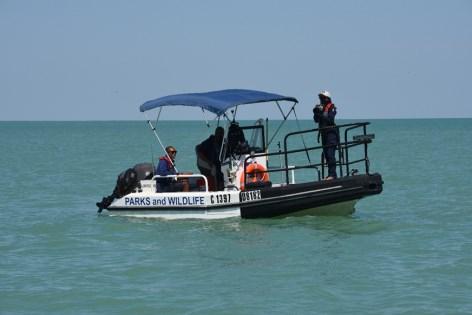
DBCA vessel Linygurra with Leroy Pigram (NBY Country Manager), and DBCA Marine Rangers Anthony Richardson and Ellen D’Cruz onboard. (Photo: Holly Raudino)
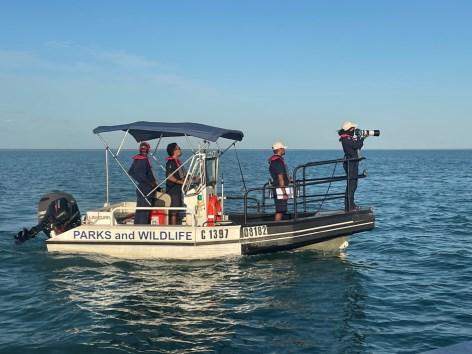
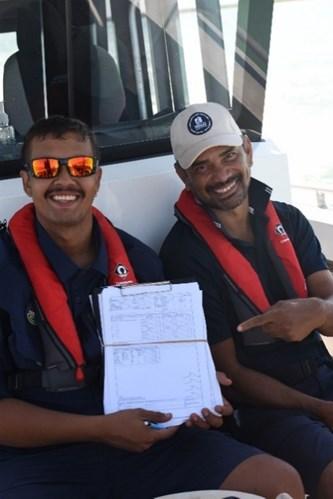
Jason Richardon (DBCA Yawuru Marine Ranger) and Holly Raudino (DBCA Research Scientist) working together spotting and photographing snubfin dolphins. (Photo Marta Espinheira)
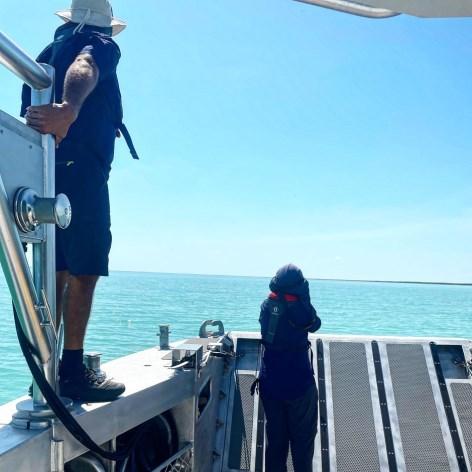
Pictured L-R, Vaughan Lee (Nyamba Buru Yawuru Country Manager), Jason Richarson (Marine Ranger), Luke Puertollano (Yawuru Operations Officer), Ellen D’Cruz (Marine Ranger). (Photo: Marta Espinheira)
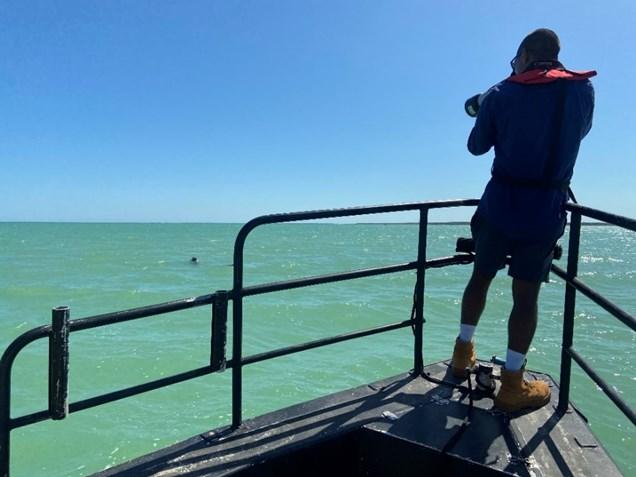
15 Yarning Time Issue 16: September 2022
Leroy Pigram photographing snubfin dolphin dorsal fin for the census (Photo: Ellen D’Cruz)
Yawuru Trainee Ranger Peter Roe (L) and Yawuru Operations Officer Luke Puertollano (R) collecting data on snubfin dolphins. (Photo: Holly Raudino)
DBCA science project updates – Kimberley region
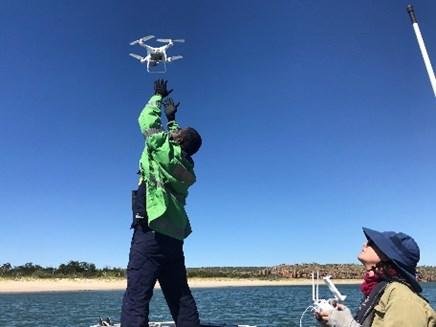
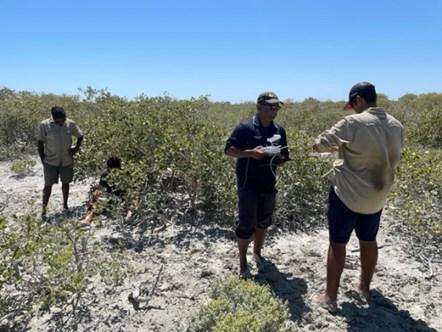
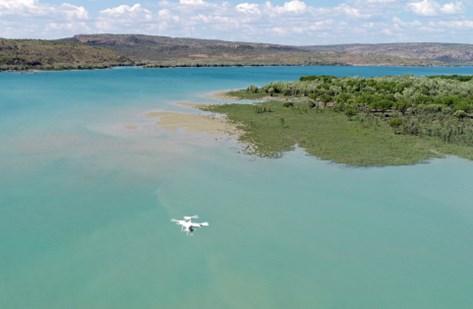
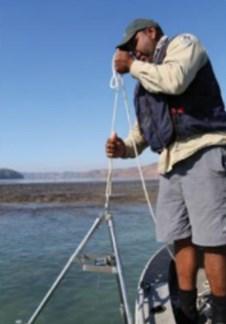

Coral reefs – Dambeemangarddee, Wunambal Gaambera, and Balanggarra sea Country
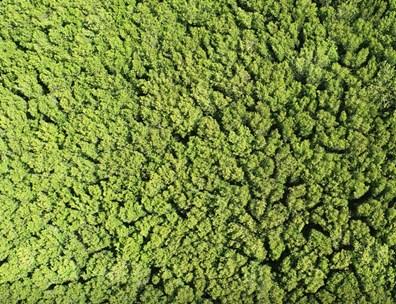
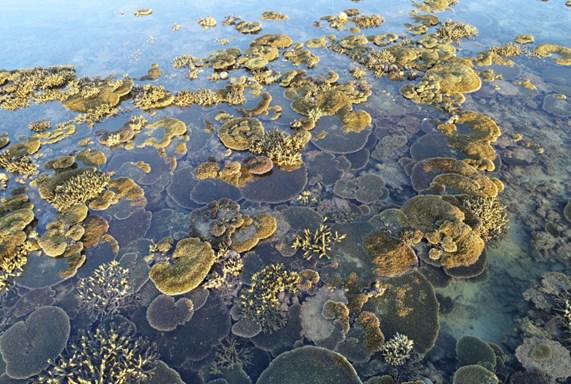
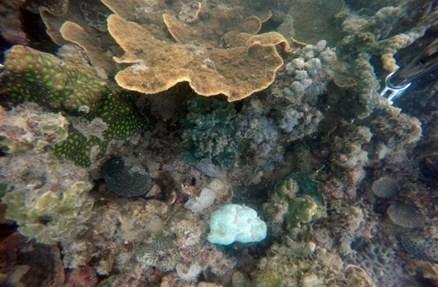
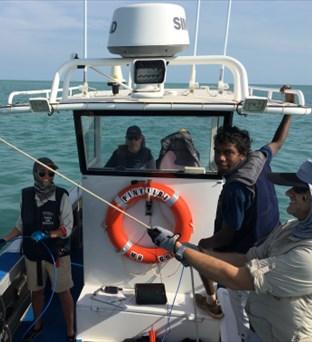

For around six years, coral reefs have been sampled across the greater Kimberley area, including sea Country of the Dambeemangarddee, Wunambal Gaambera, and Balanggarra peoples. This allows us to identify pattens in coral abundance and diversity, an important ecological value recognised in both marine park management plans and indigenous healthy Country plans. DBCA has worked together with Dambeemangarddee, Wunambal Gaambera, and Balanggarra people to select appropriate sites and collect data, which has taken place both sub-tidally and intertidally. Due to crocodile risk, we’ve sampled using drop cameras, and more recently, underwater remote operated vehicles. Long-term monitoring sites have been established and are now being periodically sampled to detect possible changes in coral health over time.

Kimberley mangroves Mangroves are ecologically and culturally important, occurring across Kimberley marine parks and indigenous sea Country. Mangrove extent and density are monitored using a combination of satellite imagery and ground truthed data, that must be collected on site using quadcopter drones. DBCA staff have worked together with the Karajarri, Yawuru, Dambeemangarddee, Wunambal Gaambera, and Balanggarra peoples to collect drone imagery in remote locations.

16 Yarning Time Issue 16: September 2022
Article by Marine Science Program and Kimberley region
Aboriginal engagement on trail projects on the South Coast
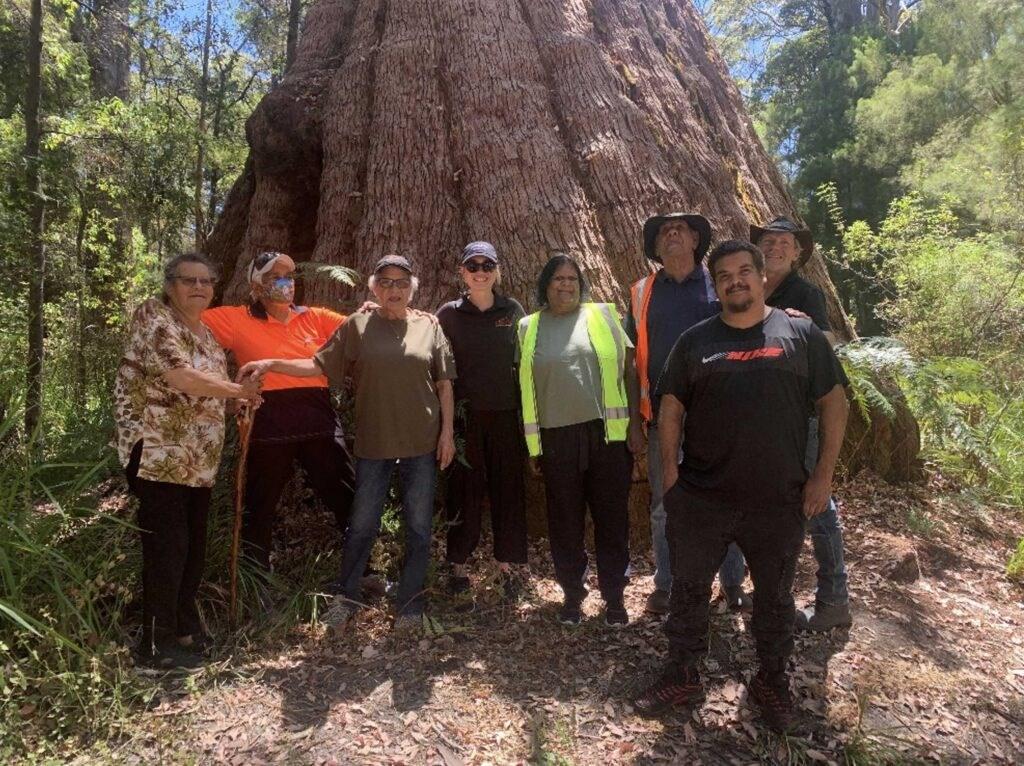

DBCA has demonstrated over many years that it is serious about engaging and consulting with Traditional Owners when managing trails, national parks and the activities within those parks.
This news article provides recent examples of DBCA engaging and consulting with the Traditional Owners in John Forrest National Park and the South Coast region, which contains 14 national parks and 150 nature reserves covering 2.5 million hectares plus another seven million hectares of unallocated Crown land (UCL) for which DBCA has responsibility.
New Explore Parks website
DBCA has just launched a brand new Explore Parks website which further demonstrates how we are continuing to engage with Aboriginal people across the State and promote cultural awareness.
• The website features Traditional Owner language groups at the top of the page under the park or attraction name.
• There is a Traditional Owner section at the bottom of some park pages that has more Traditional Owner information available.

• The park finder map has a filter to search by Traditional Owner language groups.
On the Experience page, parks and attractions have been grouped by places where visitors can experience Aboriginal culture.

17 Yarning Time Issue 16: September 2022
DBCA staff consulting traditional owners on country at the Valley of the Giants.
Article by Michael Wood, Communication and Engagement Officer (Parks and Visitor Services)
Article by Michael Wood, Communication and Engagement Officer (Parks and Visitor Services)
Follow the dream Thundelarra on-Country camp - Murchison district
The Murchison district in partnership with DBCA’s joint management partners the Badimia Bandi Mana Aboriginal Corporation and Follow the Dream, planned and hosted a camp for a group of year 7 to 9 Geraldton-based Aboriginal students from Champion Bay Senior High School. Students travelled and stayed at the shearer’s quarters at Thundelarra homestead.
Badimia Elder Bev Slater said “the students had a full agenda for their trip visiting the old homestead at Warriedar and viewed a spectacular Badimia site while listening to the Badimia Traditional Owners tell stories and teaching them about some of our native plants and animals like the Wabarl (Malleefowl) and the Meelyu (Spiny-tailed Skink).
“The group also worked together to create some great tapping sticks and message sticks with artwork that told an interpretive story about their experiences during the camp. The group also agreed they had a wonderful time sharing and learning whilst on Badimia Barna (Country).”
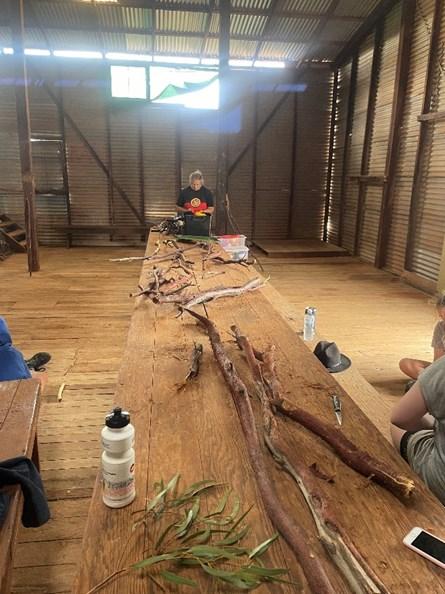 Article by Emma Hazelton, Joint Management Coordinator
Article by Emma Hazelton, Joint Management Coordinator

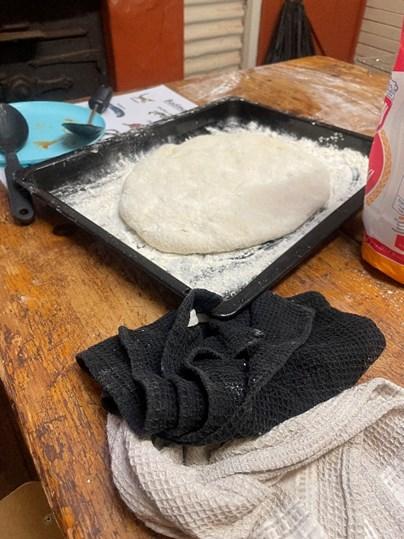


Yinggarda rangers’ new Natural Conservation Program at Kennedy Range
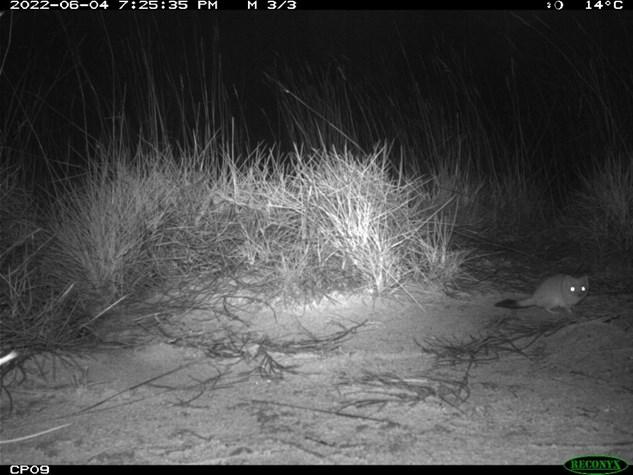
National Park - Gascoyne district
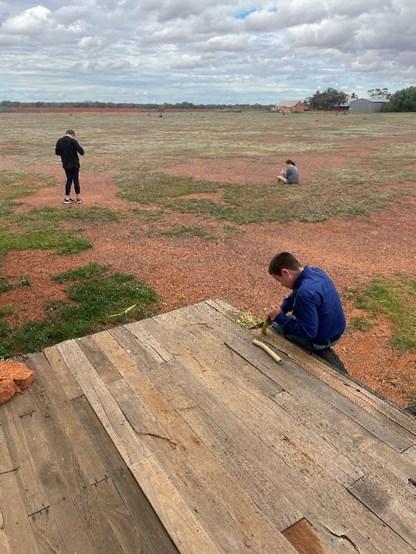
The Yinggarda rangers have embarked on a new nature conservation program to identify the flora and fauna values of the park. They have been involved in water sampling at several springs and placing 40 wildlife cameras around several locations on the spectacular Kennedy Ranges.
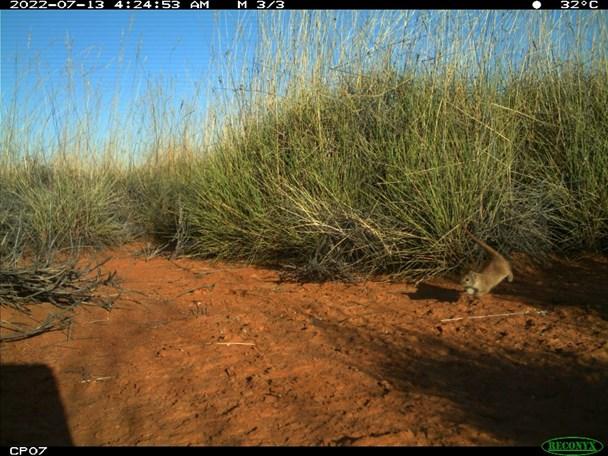
18 Yarning Time Issue 16: September 2022
First mulgara seen in KRNP in a decade
Kaluta seen in daytime
Yinggarda rangers’ new Natural Conservation Program reveals unseen wildlife at Kennedy Range National ParkGascoyne district
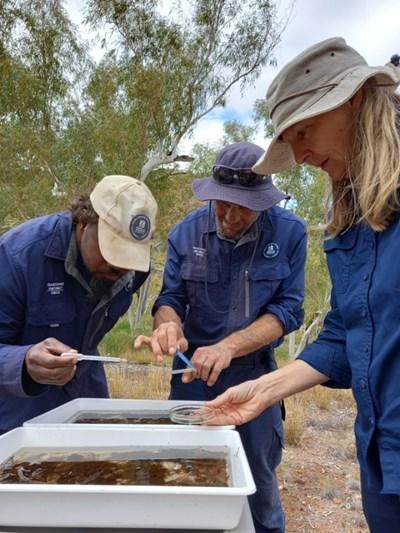
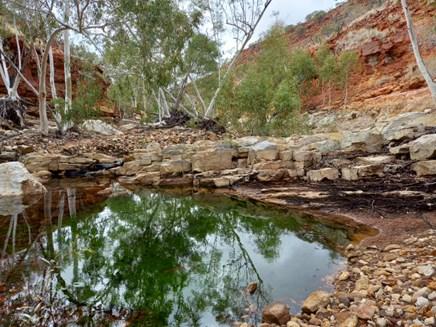
DBCA subject matter experts from Kensington attended the water monitoring to instruct the trainees on the usage and purpose of water monitoring with a view to allow the rangers to conduct monitoring independently in future for upcoming nature conservation works.
Rangers and other staff conducted water monitoring at several western locations of the Kennedy Range National Park to observe the overall health of the aquatic ecosystem which provides a vital habitat during both the summer and winter months.
These skills are important in the two-way knowledge transfer and will allow the trainee rangers to broaden and enhance their skillset to manage and look after Country.
The cameras the rangers have deployed have already proven their value, capturing the first images of a mulgara and a kaluta seen in the park in a decade.
Gascoyne District Conservation Coordinator Kim Branch was pleased, saying “it’s exciting to see the species shown so far. We’re looking forward to further understanding this spectacular section of the country”.
Hopefully the cameras and expanding nature conservation works will shed even more light on the Kennedy Range National Park in the future.
Trainee Rangers Jason Windie, Anthony Turner and Ops Officer Karin Carnes inspect aquatic invertebrates
Springs on the western Kennedy Range Article by Rufus Morse, Joint Management Operations Officer
We hope you have enjoyed reading Yarning Time.
Department of Biodiversity, Conservation and Attractions Aboriginal Engagement and Heritage Unit


17 Dick Perry Avenue, Kensington WA 6151
Email: yarning.time@dbca.wa.gov.au
Web: dbca.wa.gov.au
Subscribe: https://www.dpaw.wa.gov.au/news/newsletters
19 Yarning Time Issue 16: September 2022






































































 Article by Emma Hazelton, Joint Management Coordinator
Article by Emma Hazelton, Joint Management Coordinator








